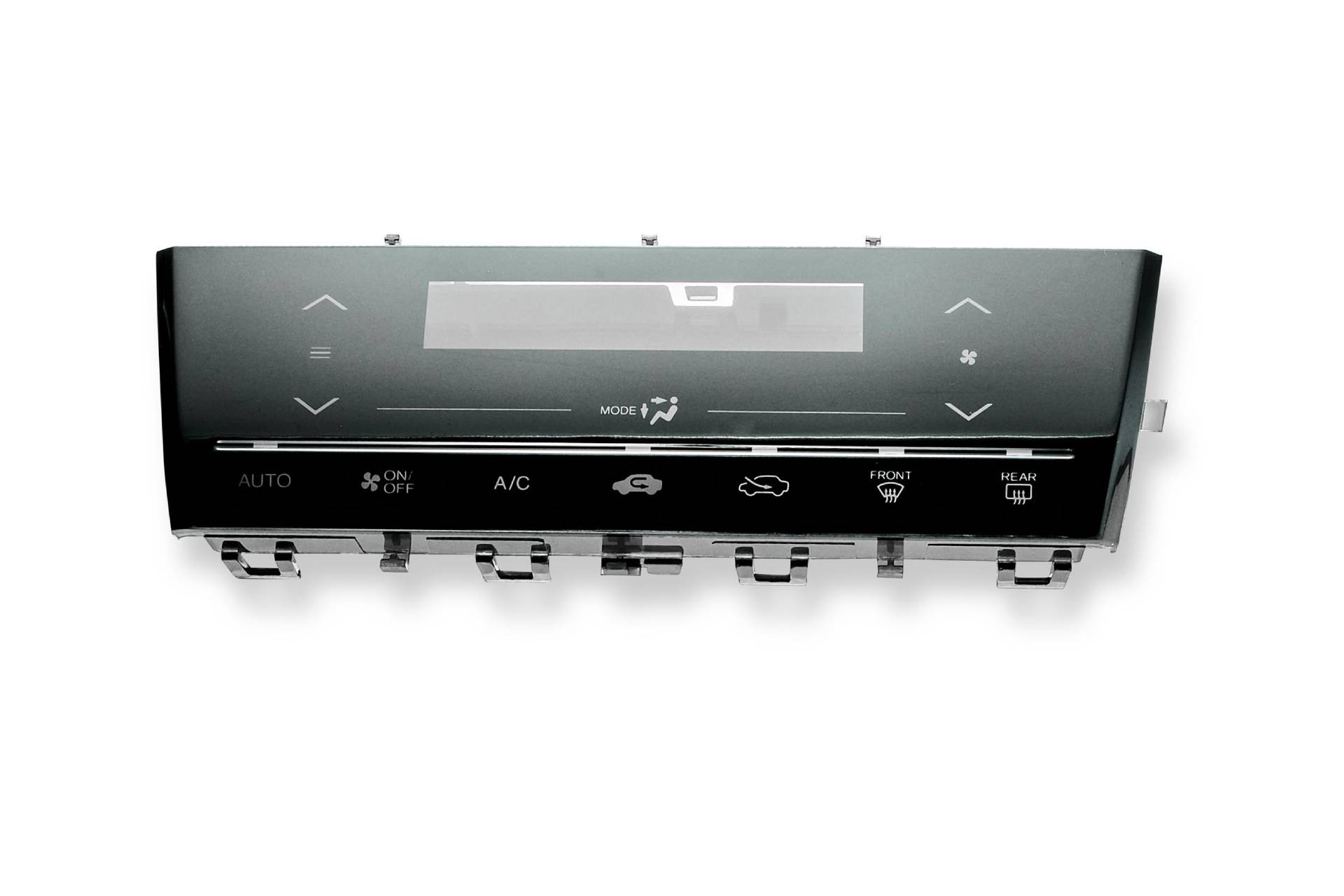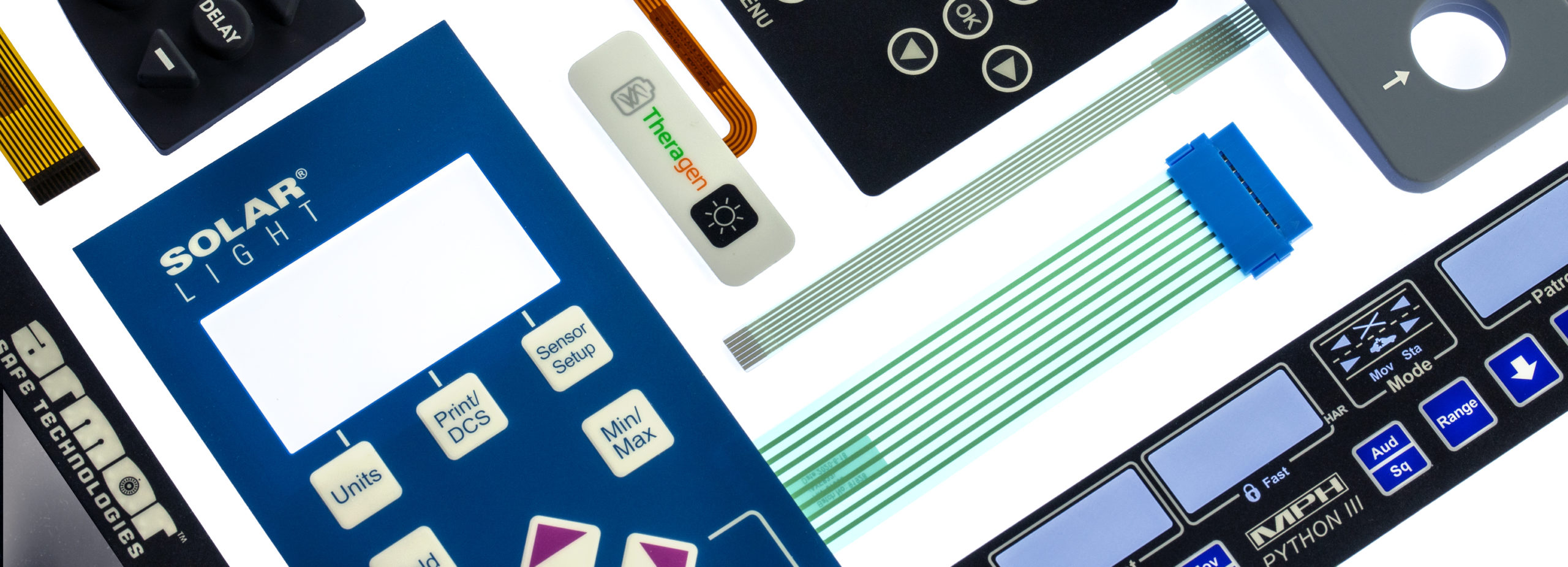Many engineers recommend working with a proven membrane switch manufacturer for custom solutions.
Many engineers recommend working with a proven membrane switch manufacturer for custom solutions.
Blog Article
All About Membrane Switch: Recognizing Its Design and Capability
When you think concerning the control user interfaces in modern devices, membrane layer buttons commonly come to mind. Let's explore what collections membrane layer switches apart from other control systems.
What Are Membrane Layer Switches?

Their seamless nature makes them very easy to clean and resistant to dirt and dampness, an important attribute in lots of atmospheres. Membrane layer switches can additionally be tailored relating to shape, dimension, and graphics, allowing makers to develop unique interfaces customized to particular items. And also, they're lightweight and slim, which helps in reducing the total mass of gadgets. On the whole, membrane switches play a significant duty in enhancing user experience throughout a large selection of applications.
How Membrane Changes Job
When you press a key on a membrane layer button, it triggers an uncomplicated yet effective system. The leading layer, usually made from flexible material, pushes down onto a conductive layer under it. This activity bridges the space between conductive traces, finishing an electric circuit. As quickly as the circuit shuts, it sends a signal to the device's controller, which analyzes your input.
You'll discover that the tactile comments differs based on the switch layout, supplying either a soft click or an extra obvious action. Once you launch the key, the membrane layer returns to its original placement, reopening the circuit and quiting the signal. This process happens virtually instantaneously, ensuring a responsive individual experience.
Membrane switches are prominent because of their resilience and resistance to dust and wetness, making them optimal for various applications, from house home appliances to medical devices. Understanding this procedure helps you value their prevalent usage.
Secret Elements of Membrane Switches
Understanding the key parts of membrane layer buttons is basic for understanding their capability and design. At the core, you'll discover the graphic overlay, which supplies the visual interface for individuals. Underneath that, there's a spacer layer that divides the circuit layers, ensuring that they don't make get in touch with until pressed. The circuit layer is where the magic happens; it includes conductive traces that finish the circuit when you push the switch. Another essential component is the adhesive support, enabling the switch to comply with surfaces safely. The protective layer guards against environmental elements and wear, prolonging the switch's life-span. Each part plays a significant role in ensuring reliable efficiency and individual interaction. By understanding these elements, you'll get understanding into just how membrane switches over run and their value in different applications.
Products Used in Membrane Layer Switch Over Style
The performance and sturdiness of membrane layer switches greatly depend on the materials utilized in their style. You normally encounter polyester and polycarbonate as key substratums because of their superb toughness and versatility. These products withstand scrapes and chemicals, making them optimal for demanding atmospheres.
The conductive layers commonly use silver or carbon, chosen for their integrity and conductivity. membrane switch manufacturer. Silver supplies exceptional efficiency, while carbon is a cost-efficient option. For the overlay, you might consider a matte or glossy finish, depending upon your visual demands and individual experience
Make specific to choose adhesives that hold up against environmental variables like temperature and moisture. Choosing the best products will guarantee your membrane layer button stands the examination why not find out more of time.
Layout Factors To Consider for Membrane Layer Buttons
While creating membrane layer switches, it's important to take into account numerous aspects that influence their capability and customer experience. Begin by concentrating on the layout and switch dimension; ensure they're intuitive and very easy to navigate. Think about the tactile comments you intend to supply-- will customers need a recognizable click or a softer touch? In addition, consider the products you'll use, as they'll influence toughness and aesthetics.
Do not forget the visuals style; clear labeling and color comparison are significant for presence. Confirm your style suits ecological aspects, like wetness or temperature level variations, which might influence performance. Finally, keep in mind the relevance of testing models with real users to collect responses and make necessary adjustments. This iterative process helps you fine-tune the design, verifying it meets both practical and aesthetic needs effectively. By very carefully thinking about these elements, you'll create a membrane layer switch that enhances usability and fulfillment.
Applications of Membrane Switches
Membrane layer buttons are versatile parts discovered in various applications, from industrial devices to consumer electronics. You'll see their impact in machines that call for sturdy interfaces and in tools that profit from streamlined styles. Understanding these applications aids you value the performance and usefulness of membrane layer buttons in day-to-day innovation.
Industrial Equipment Usage
When you're looking to enhance the functionality of commercial equipment, membrane switches provide a dependable remedy that incorporates longevity with user-friendly layout. These switches are excellent for rough environments, giving resistance to dust, wetness, and chemicals. Embrace membrane buttons to streamline your procedures and boost general efficiency.
Customer Electronics Integration
In the domain name of consumer electronics, membrane buttons play a crucial duty in improving user communication and gadget capability. You'll discover them in devices like microwaves, remotes, and video gaming consoles, giving a seamless method to connect with modern technology. Their smooth design permits easy assimilation into different items, making controls instinctive and easy to use. With their capability to include graphics and backlighting, you can enjoy a modern-day aesthetic that matches the device's general look. Membrane layer buttons additionally guarantee toughness and resistance to dirt and moisture, prolonging the life expectancy of your electronic devices. By selecting membrane layer switches, you boost not just the capability yet likewise the style of your devices, making day-to-day communications smooth and pleasurable.
Benefits and Negative Aspects of Membrane Switches
While membrane switches offer a range of advantages, they also feature some drawbacks that you ought to take into consideration. One significant benefit is their portable style, making them excellent for space-constrained applications. They're likewise cost-efficient, providing a resilient solution with read what he said a reduced manufacturing expense. On top of that, their seamless surface area is simple to tidy, boosting hygiene in settings like hospitals.

Membrane layer switches can have a much shorter life expectancy compared to mechanical switches, especially under hefty usage. They can also be less tactile, which might impact user comments during procedure. Balancing these pros and cons will help you identify if membrane layer switches are the ideal fit for your task.
Regularly Asked Concerns
How Much Time Do Membrane Layer Switches Over Usually Last?
Membrane layer changes generally last between 5 to 10 years, depending upon use and environmental problems. You'll intend to examine factors like wear, direct exposure to dampness, and temperature variations to determine their longevity properly.
Can Membrane Changes Be Custom-made for Particular Styles?
Yes, you can personalize membrane layer switches to fit specific styles (membrane switch manufacturer). You'll have the freedom to select shades, shapes, and designs that match your project's requirements, guaranteeing they mix perfectly with your overall visual
What Is the Expense Array for Membrane Layer Change Manufacturing?
The expense variety for membrane switch manufacturing generally drops in between $1 and $10 each, relying on aspects like design intricacy, quantity, and materials. You can obtain quotes from makers to locate the very best option.

Are Membrane Switches Over Waterproof or Resistant?
Membrane buttons can be made to be water-proof or immune, relying on materials used and building techniques. If you need them for damp atmospheres, ensure you specify those needs throughout the design process.
Just How Do Membrane Switches Contrast to Conventional Buttons?
Membrane switches are usually thinner and a lot more adaptable than conventional buttons, offering a sleek style. They're commonly easier to clean and incorporate, however could not provide the responsive feedback you're hop over to these guys made use of to with mechanical alternatives.
Conclusion

Report this page